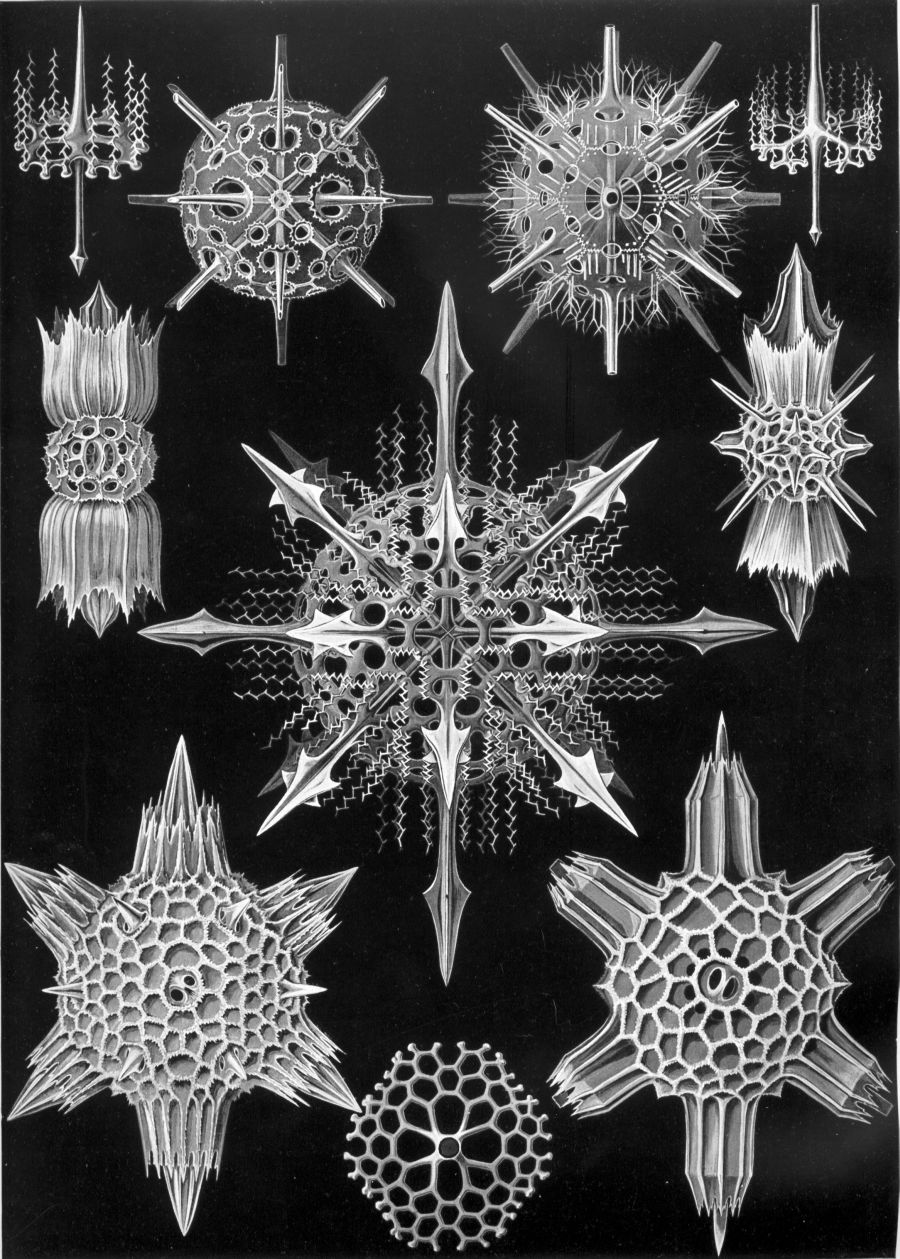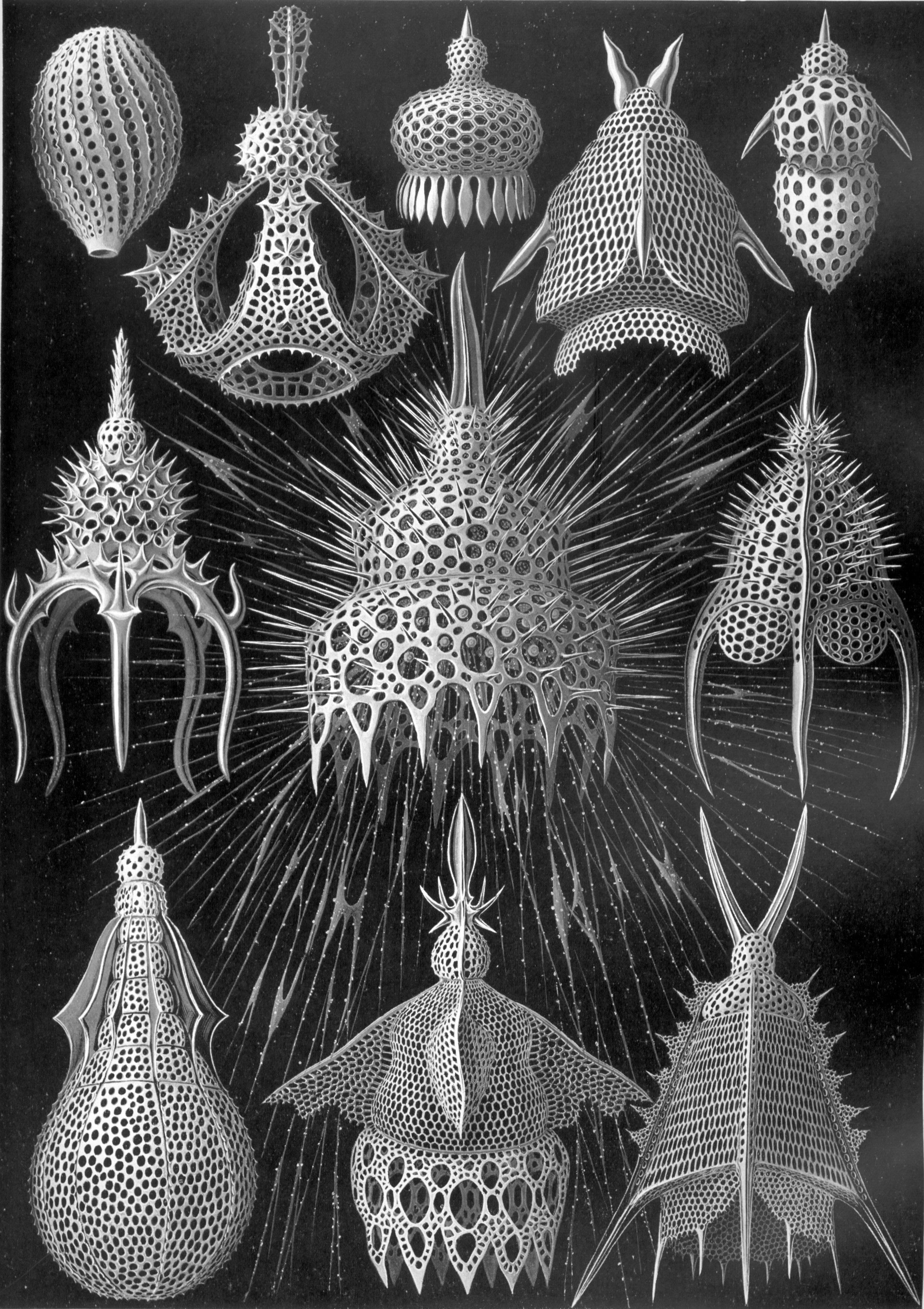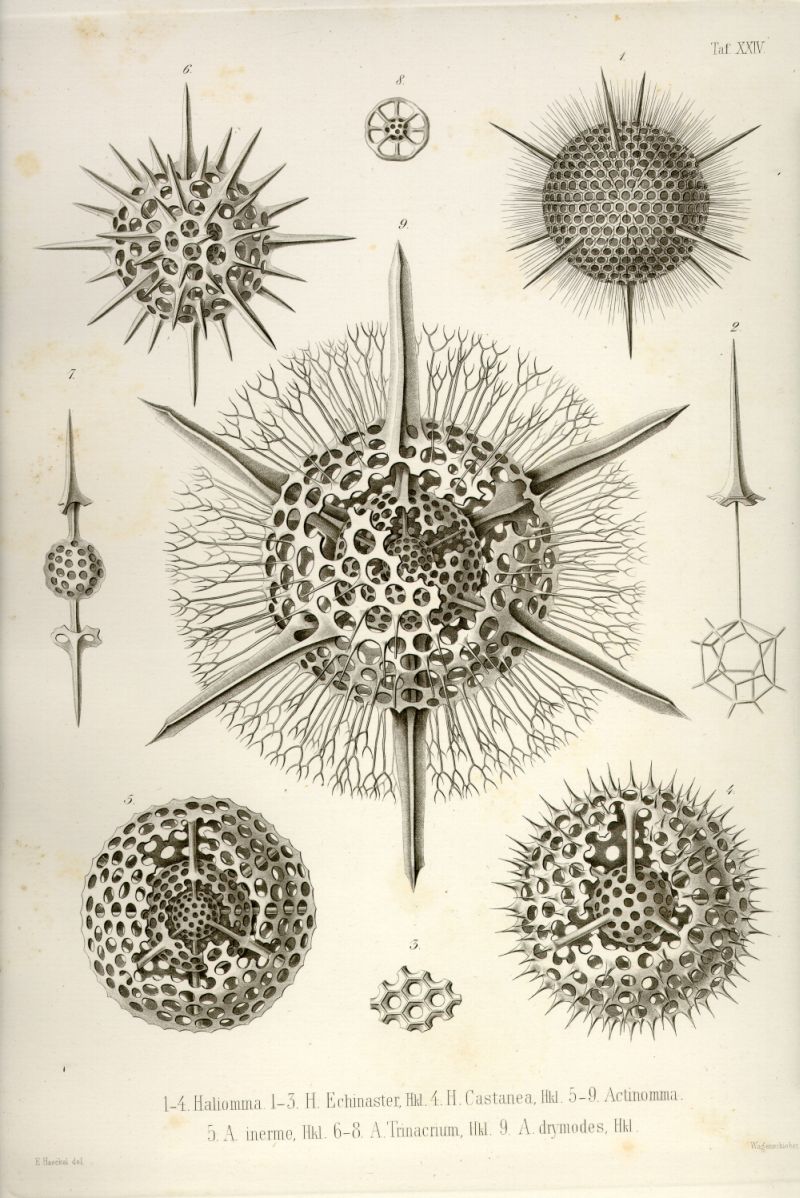In Which They Are So Simple Yet So Complex
 Friday, February 6, 2009 at 12:00PM
Friday, February 6, 2009 at 12:00PM 
Ernst Haeckel's Radiolaria
by Melanie Strong
German biologist, naturalist, philosopher, physician, professor and artist Ernst Haeckel (1834-1919) is not considered a household name by any means. His varied and extensive work gave rise to the terms ecology and First World War, the rise of Darwinism as a valid theory and the discovery and proposal of the Protista kingdom of organisms within biology.

Perhaps his greatest and most enduring work is found in his artistic endeavors, in which he sought to combine his creative vision with his desire for scientific accuracy.

Haeckel's focus for many years was an intricate, single-celled organism known as a Radiolarian. In his initial work with them, he found, named and depicted over 150 diverse species. He would go on to document thousands more.

Radiolarian are single-celled, oceanic organisms. Their cell is separated by a tiny central capsule into endo- and ectoplasm and it is on this endoplasmic exterior that amazingly intricate mineral skeletons are composed. Their remains comprise the majority of the ocean's worldwide fossil record, especially in shallow coastal waters.

Explanations for this organism's intricately patterned silica skeleton are disputed. Most believe that it allows for feeding and buoyancy.

The perpetually symmetrically patterned perforations form gradually as the organism feeds and the leftover skeleton is extracted from a build up of minerals and silica.

The radiolarians' inherent two-dimensional nature is directly altered by the effect of this process and it becomes an elaborate three-dimensional, microscopic structure.

While Ernst Haeckel was not the first or last scientist to work with radiolarian, his art and his work remain today as a testament to the marriage that can exist between the two. Haeckel believed that all shapes found in nature exist in radiolaria and wondered if God did not use these tiny creatures as a drawing board for further design.

Haeckel's work, life and the science of the times is outlined extensively in Icarus' Films award winning Proteus: A Nineteen Century Vision. Drawing on the apparent dichotomy in Haeckel's life (art versus science and then the twinning of the two), Proteus explores the complex simplicity in radiolarians and in science itself.
Melanie Strong is the senior contributor to This Recording. She also is an asshole on tumblr!

"Öngyilkos Vasárnap" - Venetian Snares (mp3)
"Strange Love (Don't Be Lazy)" - Brent Randall & His Pinecones (mp3)
"Ping Pong" - Stereolab (mp3)

BEST OF MELANIE STRONG!
Melanie on surrealism
"There is nothing quite like sitting in your underwear"

Spores take control of your brain, Melanie shows you how
Binge and Purge

She controls the five elements of earth
Melanie's tumblr
PREVIOUSLY ON THIS RECORDING
Molly’s a mindfreak.
Why we are the way that we are.
Frank O’Hara was the man.































Reader Comments (2)
[...] Tiny little organisms. [...]
You are looking at fake pictures.-
He was not a scientist either.